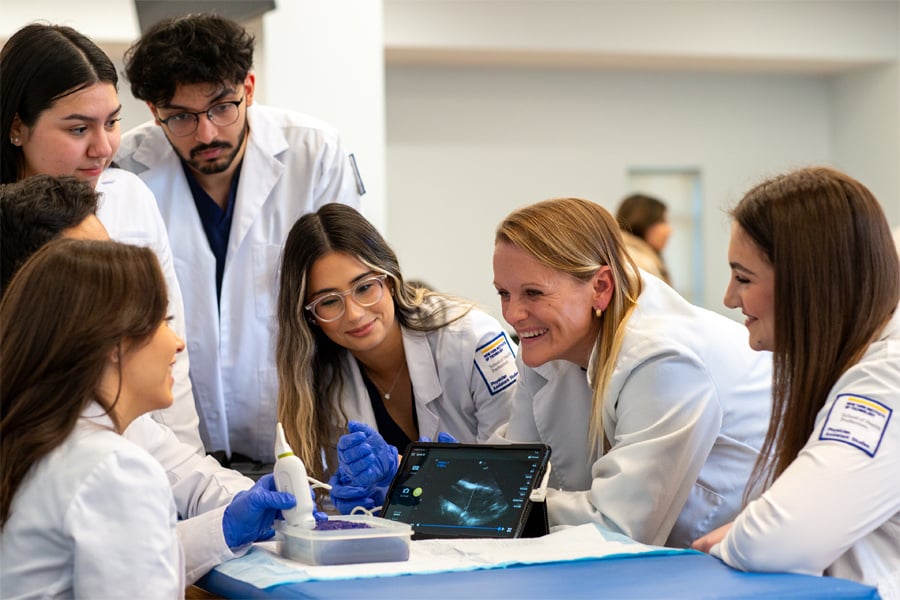Continuing Education for Physician Assistants: How Much and What Types Are Needed

Continuing medical education, or CME, is a fundamental aspect of a Physician Assistant’s (PA) professional journey. It's not just about acquiring certification; it's about maintaining the knowledge and skills necessary to provide high-quality care in a constantly evolving field. Understanding what CME entails, the different types available, and its importance is crucial for any PA, especially those new to the profession.
What is CME and Why Does It Matter?
CME serves as a lifelong learning process for medical professionals. Even after completing PA programs and starting clinical practice, the learning doesn’t stop. Medical advancements, new treatments, and evolving guidelines require PAs to continually update their knowledge to provide the best care for their patients.
For PAs, maintaining certification is an ongoing process. This includes completing a specified number of CME hours every two years and passing a recertification exam every ten years. Additionally, certain states have specific CME requirements. While it may seem demanding, these requirements are in place to ensure that PAs remain competent and capable of delivering the highest standard of care.
Understanding CME: Category 1 vs. Category 2
CME is divided into two main categories: Category 1 and Category 2. Both are important, but they differ in how structured they are and what kinds of activities count toward each.
Category 1 CME: Structured and Accredited Learning
Category 1 CME involves more formal and structured learning activities, which are accredited by recognized organizations such as the Accreditation Council for Continuing Medical Education (ACCME) or the American Academy of Physician Assistants (AAPA). Activities that count as Category 1 CME include:
- Live Activities: These include medical conferences, workshops, and seminars where participants learn directly from experts in real-time settings. For instance, you may choose to use Med-Challenger for Physician Assistants, which is fully accredited and contains over 150 AAPA Category I credits.
- Enduring Materials: These educational resources, such as online courses or recorded lectures, can be accessed at any time. Completing an online course on diabetes management, for example, would earn Category 1 CME credits.
- Journal CME: Medical journals often offer CME credits for reading specific articles and completing associated quizzes. This allows PAs to stay updated while earning credits.
- Performance Improvement CME: This involves assessing clinical practice, implementing changes, and evaluating outcomes. It's similar to running a quality improvement project within one's practice.
- Test Item Writing: Contributing exam questions for assessments like the Physician Assistant National Recertifying Exam (PANRE) also counts as Category 1 CME.
Category 2 CME: Flexible and Self-Directed Learning
Category 2 CME provides more flexibility and is typically self-directed, though it is not accredited. However, it still plays a critical role in professional development. Examples of Category 2 activities include:
-
Professional Reading: Reading medical journals, textbooks, or reliable online resources contributes to Category 2 CME. For example, reviewing the latest techniques in surgery would fall under this category.
-
Consultations with Colleagues: Engaging in discussions with other healthcare providers about complex cases can earn Category 2 CME credits. These consultations often result in practical and valuable learning experiences.
-
Precepting or Mentoring: Teaching or mentoring PA students or residents is another way to earn CME credits while reinforcing one's own knowledge.
-
Quality Improvement Activities: Participating in or leading projects aimed at improving patient care processes also counts toward Category 2 CME. Such activities might include enhancing the management of chronic conditions or streamlining clinic operations.
-
Self-assessment and Practice Evaluation: Reflecting on and evaluating one's clinical practice to identify areas for improvement is another form of Category 2 CME.
Why is CME Important?
CME is more than just a requirement for maintaining a PA’s license—it is essential for providing the best possible care. Medical knowledge is continually advancing, and PAs must stay informed about these changes. The treatments and techniques learned in school might evolve, and CME ensures that PAs remain up-to-date and effective in their practice.
Additionally, completing CME is a requirement for maintaining certification with the National Commission on Certification of Physician Assistants (NCCPA). Every two years, PAs must complete 100 hours of CME, and every ten years, they are required to pass the PANRE. Some states also have specific CME requirements, making it crucial to stay informed about what is needed to keep a license active.
Embrace Lifelong Learning
Continuing education may seem daunting at first, but it is a vital part of being a Physician Assistant. Staying current with CME not only meets certification requirements but also ensures that PAs continue to grow and excel in their careers. Whether through attending conferences, engaging in professional reading, or participating in quality improvement activities, every aspect of CME contributes to better patient care.
Lifelong learning is an essential component of the PA profession, and embracing this journey leads to improved patient outcomes and personal professional growth.
For personal medical education that includes board's prep, MOC, and CME requirements, Med-Challenger for Physician Assistants has you covered!






